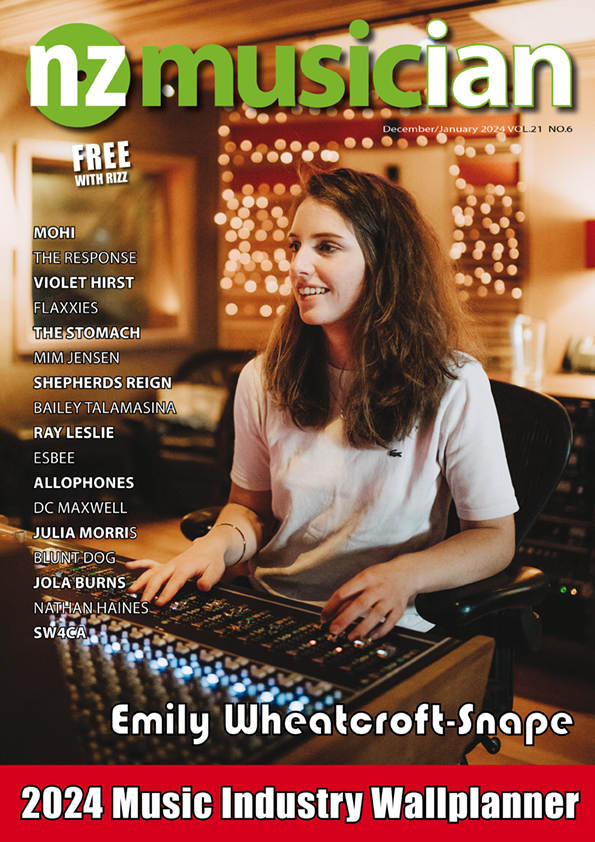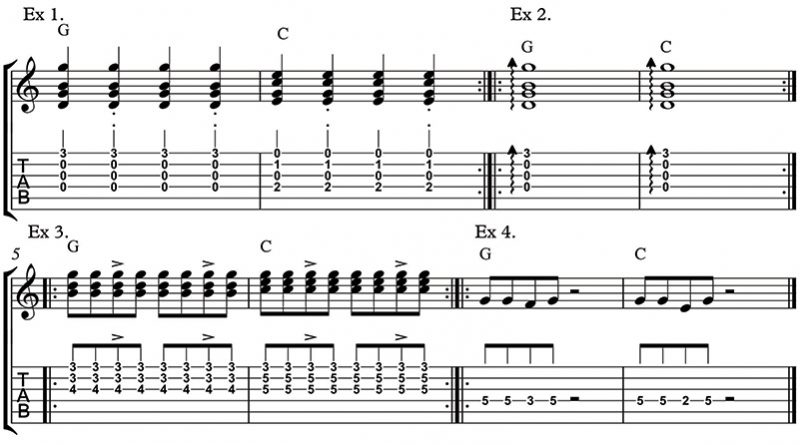Guitar Cool: The Rhythm Guitarist’s Role
Guitar Cool: The Rhythm Guitarist’s Role
The role of rhythm guitarist within a band setting is often overlooked, misunderstood and undervalued amongst fellow musicians. Not many guitar players actually understand what the role entails either, but here I will explain some of the most basic things you need to know to become a better rhythm player immediately.
If you are in a band setting where you are the only guitarist, then you are likely playing rhythm and back up parts around 95% of the time and solos for the remainder. If you are in a band with two guitars then you will be playing rhythm 100% of the time!
Rhythm guitar is not just about strumming chords all the time as many people think, but rather uses everything you will ever learn in music. One common tendency is to overplay by strumming too much, which can kill a song. This is where the saying ‘less is more’ comes from – playing a lot less can really make the song come alive and groove. Exercises 2 and 4 demonstrate this.
First of all, to be a great rhythm player you must know the song off by heart. By that I mean the song form, the chords, and where on the beats they change, where the hits (accents) are, what dynamics are used, what the other musicians are playing etc.
Yes, it takes a lot of discipline and effort to do this, but if you do you will be well ahead of the pack already. Writing stuff down on paper helps you to memorise the parts – you don’t have to read music to do this, just write it any way you want to that will help you. It doesn’t matter how much your band practices, if you don’t know your individual parts well before you get to the rehearsal, your band will suck.
If you listen to favourite recordings you will come across a few basic parts that all the professionals employ regularly. The first one is to play nothing at all. Yes that might sound strange, but in many songs the rhythm player ‘lays out’ for the first verse and sometimes the third verse. Sometimes a ‘tacit’ is called for – just another name for laying out. When the guitar does come in it all adds to the dynamic levels of the song, remembering that verses are normally quieter than choruses and dynamic levels can change a lot during a song.
Looking at the examples in the music/tab I have outlined four different rhythm guitar parts you hear often. Sometimes you might hear only one of them and sometimes all four within a song. Keep your ears open.
Exercise 1 gives you a chord progression using a bar of G and one of C, and within it are partial chords. Under beats 2 and 4 are dots which indicate a staccato note meaning to stop it just after you play it. So it sounds like – long, short, long, short. This is a type of rhythm part you hear a lot, but many players miss. It really is a good thing to get used to doing as little things like this can take your playing to the next level.
In Exercise 2 is what many people call the ‘diamond strum’, you strum on beat one and let it ring for four beats. The wiggly arrow means to run your pick down the strings so as to get a slight arpeggio effect. It sounds best played very close to the bridge as well.
Exercise 3 is a triad part played up the neck further with an accent on 2 and 4, which is the back beat. This type of rhythm part really gives a song a lot of drive and energy. The accent mark is the little direction type arrow over beat 2 and 4. You will hear accents on any beat within a bar, so listen to your favourite songs very carefully as the accents make the groove. Sometimes a guitar part is just to play the back beat and nothing else, which can give even more energy to a song.
The bubble part is what is in Exercise 4. It is best played with muted strings and on fretted strings. Normally they are just one note and are played staccato as well.
Now try playing these parts using your looper. Try two parts at a time, mix them up, then three, etc. You might be able to invent some other small part that can accompany these parts.
Of course there are many other parts you will hear, but these four different rhythm parts will transform your playing immediately, and they are all very easy to do with a bit of practice. Over the next few months keep your ears open to see if you can hear these parts in your favourite songs. If you have any trouble, it might pay to see a good guitar teacher.
Kevin Downing is a professional guitarist, teacher, and author. His contact details, along with many other articles and freebies, are on his website at www.guitar.co.nz


